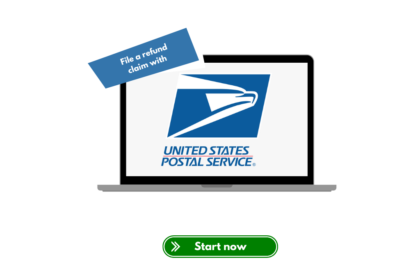As an e-commerce business, your customer journey can be split into two parts—before purchase, which involves the customer visiting your online store, exploring your offerings, and buying what they like, and the other half, post-purchase.
This half is often overlooked by businesses but is, in many ways, the most important leg of your customer journey. How, you ask? Because the quality of the delivery experience is what customers judge to decide whether they’re going to continue their association with your business, and recommend it to others. You see, 72% of customers say they won’t return to a business after a poor delivery experience.
But even with such a high percentage, e-commerce businesses aren’t pulling up their socks. As much as 85% of online American shoppers are unhappy with their delivery service. Today, to ensure you stay at your customer’s top platform, you need to polish your delivery experience.
And the first step for that involves alleviating common delivery issues to facilitate a smooth experience. To help you with this, here we discuss the top delivery issues, why addressing them should be a priority for you, factors that contribute to a delivery issue, and most importantly—how to go about waving goodbye to these.
Common Types of Delivery Issues
Here’s a look at some of the most common delivery issues your customers face:
1. Delayed or Late Deliveries
Easily, one of the most common delivery issues e-commerce businesses face is deliveries taking place after the promised date. Over 55% of customers say they have experienced delayed deliveries. When your package doesn’t reach the customer on the date promised, it doesn’t just disappoint the customer, which is bad enough, but also compromises their satisfaction, brand trust, and any chance of brand loyalty.
After all, when you don’t follow through on a critical promise of the delivery date, it prompts all sorts of doubts in their minds like—‘ Did I get scammed? Will I ever get my package? If they didn’t follow through on this, could the product’s quality also be different than what I was promised?’—all questions that do nothing but convince the customer that they don’t want to be in the same boat again.
2. Packages That Just Go MIA
Your packages could get shipped right, even get sorted at a carrier facility, but then suddenly—go MIA, never to be seen or heard of again. This could happen for a variety of reasons—misidentification at a carrier facility, weather conditions that just bopped the package off the ship or an overloaded truck, incorrect tracking information (your package was probably lost much before it got flagged as ‘lost-in-transit’), or even misdelivery (it made it to your customer’s neighborhood but got delivered to the wrong house).
The theories are endless, and unfortunately, most of the time, we don’t really get to learn what happened to the package or whose to blame, you or your shipping carrier. But either way, your customer is pissed, and your relationship with them is on the rocks.
3. Damaged Packages
Imagine you finally find what you’ve been looking for, order it online, and even receive the box. Sure, the box looks like it’s been to hell and back, but you just want to get to your order. But then, disappointment strikes—you open the box only to find what you’ve been so eagerly anticipating damaged or broken.
This is the saddest e-commerce store, if there ever was one. And unfortunately, it’s the case with 85 million packages in 2024. The shipping journey can be a brutal one, and if packages aren’t adequately safeguarded and taken care of, it can cause customers to receive damaged orders. And when this happens, 57% of them think twice before returning to the business.
4. Incomplete Packages
By this, we mean that only a portion of the order gets delivered. Let’s say, for instance, a customer orders the Harry Potter book set only to receive six instead of the total seven—The Prisoner of Azkaban is probably still sitting on the warehouse shelf.
It’s not an ideal situation, is it? Your customer is not going to thank you for at least delivering the six but is instead going to make you pay for snatching what should have been the perfect moment of finally holding the collection in their hands—one they’ve probably been looking forward to all day.
And they will do this by bombarding your customer service with scathing emails, if not calls, and dropping a less-than-favorable post on X or a Google review. But the worst of all—deciding to never return to your e-commerce store again.
5. Unavailability of Customer at the Time of Delivery
Another delivery issue can be the absence of the customer at the address when the delivery agent arrives. In case the delivery requires a signature, it can mean the delivery will have to be re-attempted.
Alternatively, the delivery agent might elect to drop the package on the porch, but that’s no good either because they make the package vulnerable to porch pirates. These refer to individuals who steal e-commerce packages from porches before customers take them in. Considering porch pirates have stolen as much as USD 12 billion worth of packages as of 2024, leaving a package at the customer’s doorstep is no longer a viable option for delivery agents.
6. Lack of Delivery Updates
The last delivery issue on our list is the lack of delivery notifications to customers. Keeping your customer in the dark is not a good strategy—to say the least. As much as a fifth of online customers track their packages multiple times a day. Your customer wants to know where their package has reached in the delivery journey and the estimated delivery date as well.
But simply informing them is half the game. The other half is about ensuring the updates are accurate. 82% of American consumers say they have high or very high expectations for accurate delivery information when they track their packages.
Keeping your customers informed about their packages’ whereabouts doesn’t just meet an evolving customer need but also helps reduce the Where Is My Order (WISMO) tickets your support team has to deal with.
Importance of addressing delivery issues in logistics
But is it really that important to take steps to reduce your delivery issues? Should it be in your top three priorities? Yes, and Yes! Addressing delivery issues is important to ensure your e-commerce business stays relevant and, well, alive. Here are the benefits of alleviating delivery issues:
1. Aids in Driving Customer Satisfaction, Retention, and Consequently, Sales
53% of online customers expect same-day delivery options. However, only just a notch above 50% of e-commerce businesses actually offer it. What’s more, 75% of customers expect free shipping, with 25% ready to spend more for it.
With such customer expectations, ignoring delivery issues is akin to willfully tanking your business. You see, delivery issues come in the way of a smooth and fast delivery experience, causing delays, disappointments, and frustration for customers.
If you address them to eliminate them, you pave the way for an optimized delivery experience, repeat purchases, and higher sales.
2. Facilitates Shipping Efficiency and Shipping Cost Reduction
Alleviating delivery issues also helps you recognize bottlenecks in your shipping processes and areas that might be bleeding your shipping budget. You see, addressing delivery issues means finding their root cause, which can prompt you to evaluate your entire shipping pipeline. In doing so, you can identify processes that can be streamlined, optimized, automated, and improved to reduce costs and enhance the delivery experience for your customer.
3. Helps You Ensure Your Supply Chain is Functioning Optimally
Yes, delays in delivery frustrate customers and compromise their brand experience, but they also disrupt your supply chain, causing a domino effect with other business activities such as shipping invoice clearance, returns and refunds, etc.
And so, addressing delivery issues also helps you streamline your supply chain, take contingency measures, and keep an eye on your operations. Resolving delivery issues proactively ensures your supply chain stays on track and reliable.
4. Gives You a Competitive Advantage
Lastly, addressing your delivery issues ensures you stay a step ahead of your competitors. You see, it helps facilitate consistent delivery and a good reputation with customers. As a result, if your customer has to choose between you and your competitor, they will likely choose you for the assurance of a smooth delivery experience.
Factors Contributing to Delivery Issues
More often than not, one delivery issue will be a result of a combination of problems within your delivery process and operations. And to understand how to tackle them, first, we need to identify them. Here’s a look at what contributes to a delivery issue:
1. Disruption in Supply Chain
Delivery issues can be a result of supply chain disruptions caused by geopolitical changes, port congestion, vessel delays, and freight shipping capacity limitations. Even if one stage in the supply chain falters, it will affect the integrity of the entire chain. You see, since the efficiency of one stage directly affects that of the next, any slowdowns have a domino effect, ultimately resulting in issues at the time of delivery.
2. Mother Nature
We can’t control the weather. All we can do is plan based on forecasts. But even then, there will be times when a sudden thunderstorm, hailstorm, tornado, or typhoon throws water on our meticulously planned shipping schedule—quite literally.
Such weather anomalies can reduce visibility, create treacherous conditions, and cause air, water, and road transport to halt operations. These conditions can naturally cause delivery issues such as delays, lost and damaged packages, and even a glitch in shipping notifications.
3. Global Emergencies
Rare as they might be, global events such as wars, pandemics, and other types of emergencies compromise shipping efficiency, resulting in delivery issues. Some recent real-life examples include the Russian invasion of Ukraine, the COVID-19 pandemic, and the blockage at the Suez Canal, which lasted almost a week, affecting multiple shipping carriers that used the heavily frequented route.
4. Issues with Labor
Yes, we are heading towards massive automation, but the human element will always play a crucial role in shipping, whether it’s to pack and pick e-commerce packages, load and unload them, sort them at shipping carriers’ facilities, or ensure they get assigned to the right destination.
Today, the shipping industry continues to be a labor-intensive space. And so, when labor-related issues come up, they naturally affect the smooth delivery of e-commerce packages. Examples of labor-related issues include COVID outbreaks, strikes, workforce shortages, etc.
5. International and National Holidays
Shipping carriers observe certain international and national holidays. And so, they don’t pick, ship, or deliver orders on those days. In the world of e-commerce, where customers expect same-day delivery, even a 24-hour delay can sour the post-purchase experience.
6. Inaccurate Shipping Data
Lastly, delivery issues can also be a result of a random typo in the address, a missing or incorrect last digit in the customer’s mobile number, or an old address that the customer just forgot to change. If your shipping carrier doesn’t have enough information to deliver the e-commerce parcel, it can cause unnecessary back and forth between your carrier, you, and the customer, ultimately leading to delays, lost packages, and incorrect shipping updates.
Solutions to Mitigate Delivery Issues
Here are some strategies that can help you bid goodbye to your delivery issues:
1. Prioritize Robust Packaging
We’ve said it before, and we’ll say it again—your product’s packaging is crucial, not only to its safety but also to its smooth movement through the shipping journey. When we say ‘packaging,’ we mean the box it’s packed in, the packaging foam, bubble wrap, and any tissue you’ve encased it in within the box to prevent damage due to rough handling and even its label.
If these three aspects aren’t optimized, you run the risk of the package arriving damaged and even getting misidentified through the shipping process, causing delays, loss, and inaccurate shipping updates. Moral of the story—ensure your product is well packed and properly labelled.
2. Choose a Reliable Shipping Carrier
Shipping carriers are effectively the guardians of your package and are responsible for its safe journey from your warehouse to the customer’s front door. And so, ensuring you have the right partner is critical to facilitating smooth, hassle-free, and reliable delivery of your packages.
Do your market research and look for shipping carriers that offer reasonable shipping rates, align with your delivery and return policy, have a robust network within your delivery region, offer a good shipping refund policy, and enjoy a positive reputation to find the ideal shipping partner.
3. Offer Customers Delivery Flexibility
83% of online customers consider on-time delivery as the most important factor influencing their satisfaction with an e-commerce store. What’s more, 99% of customers rate on-time delivery as the gold standard.
On-time delivery means ensuring your package reaches the customer when you promised it would. And while we did discuss that same-day delivery is becoming popular amongst customers, all customers don’t want same-day delivery.
So, instead of making your job harder and rallying to ship your product ASAP. Ask your customers when they want it. Offer standard and expedited delivery. You can also give your customers the option to pick up their packages from a local pick-up point to reduce your last-mile shipping costs.
Doing this doesn’t just mean giving them the flexibility to choose and personalizing their experience (already a route to earning brownie points), but it also means improving the chances of your customers being present when the delivery agent comes knocking, eliminating a critical delivery issue.
4. Facilitate Clear Communication with Stakeholders
Maintain an open line of communication with all your stakeholders, from manufacturers and warehouse personnel to shipping carriers and customers. This ensures you’re immediately alerted in case of unavailability of product, slowdown in the shipping schedule, or any other problem that could cause a delivery issue.
This gives you time to get the situation under control and update all stakeholders that will be affected. Sure, emailing or calling your customer to tell them their package might be a day late is not ideal, but it is the right thing to do. Crossing your heart and hoping they don’t realize the delay is the wrong thing to do.
5. Create and Implement a Hassle-Free Returns Policy
Maintain an open line of communication with all your stakeholders, from manufacturers and warehouse personnel to shipping carriers and customers. This ensures you’re immediately alerted in case of unavailability of product, slowdown in the shipping schedule, or any other problem that could cause a delivery issue.
This gives you time to get the situation under control and update all stakeholders that will be affected. Sure, emailing or calling your customer to tell them their package might be a day late is not ideal, but it is the right thing to do. Crossing your heart and hoping they don’t realize the delay is the wrong thing to do.
6. Offer Free Shipping Wherever Possible
As discussed earlier, free shipping is an increasingly popular factor for modern customers to consider. And so, if you can afford it, offer this to your customers. It can help you lessen the blow of delivery issues. The customer might think—’Okay, they delivered a day late, but at least the shipping was free.’
This might be wishful thinking, but either way, free delivery can help you insulate your customer experience from shipping issues to an extent. The rest can be managed by personalized offers, discounts, and coupons.
7. Integrate a Delivery Experience Management Tool
We saved the best solution for last—Delivery Experience Management software. LateShipment.com’s Delivery Experience Management software helps you streamline and optimize your delivery experience to drive revenue from repeat purchases by 12%, increase post-purchase customer engagement by six times, and reduce your WISMO inquiries by 72%. How does it achieve this? Here are the secret sauce’s ingredients:
- Automated shipping notifications across WhatsApp, email and SMS
- Custom order tracking page accessible from your storefront
- Advanced shipment tracking (partial or multi-carrier shipments)
- Personalized order recommendations to encourage customers to continue buying from your business
- Requests for product reviews to help you gain targeted customer feedback
- Deep insight into customer engagement, Delivery Satisfaction (DSAT) scores, etc.
With LateShipment.com, you position yourself to not only address but also mitigate all delivery issues in a jiffy and for good.
Conclusion
Common delivery issues range from delayed deliveries and those lost in transit to the customer’s unavailability at the time of delivery and a lack of delivery updates. To tackle this, you can consider offering delivery flexibility, ensuring robust packaging, offering free shipping (a big winner with the modern customer), and conducting regular checks on your supply chain to ensure efficiency.
But the real game changer? A Delivery Experience Management solution in your tech stack. Specially designed to automate your delivery journey from start to finish, this user-friendly, advanced tool is the perfect partner for your e-commerce team.
LateShipment.com’s Delivery Experience Management software offers automated delivery notifications to keep your team and customers updated on packages’ movement through the shipping journey, a custom order tracking page accessible from your storefront, proactive issue resolution, smart incident alerts, deep insight through analytics and reports, and much more.
Onboard LateShipment.com, reduce delivery issues, and wow your customers with ease. Book a demo today!










